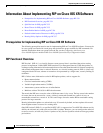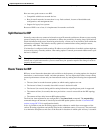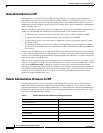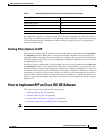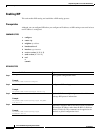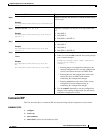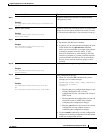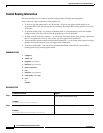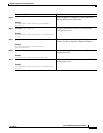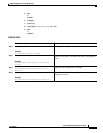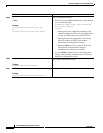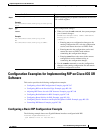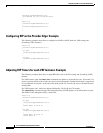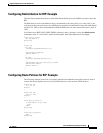
Implementing RIP on Cisco IOS XR Software
How to Implement RIP on Cisco IOS XR Software
RC-342
Cisco IOS XR Routing Configuration Guide
OL-14356-01
Control Routing Information
This task describes how to control or prevent routing update exchange and propagation.
Some reasons to control or prevent routing updates are:
• To slow or stop the update traffic on a WAN link—If you do not control update traffic on an
on-demand WAN link, the link remains up constantly. By default, RIP routing updates occur every
30 seconds.
• To prevent routing loops—If you have redundant paths or are redistributing routes into another
routing domain, you may want to filter the propagation of one of the paths.
• To filter network received in updates — If you do not want other routers from learning a particular
device’s interpretation of one or more routes, you can suppress that information.
• To prevent other routers from processing routes dynamically— If you do not want to process routing
updates entering the interface, you can suppress that information.
• To preserve bandwidth—You can ensure maximum bandwidth availability for data traffic by
reducing unnecessary routing update traffic.
SUMMARY STEPS
1. configure
2. router rip
3. neighbor ip-address
4. interface type instance
5. passive-interface
6. exit
7. interface type instance
8. route-policy {in | out}
9. end
or
commit
DETAILED STEPS
Command or Action Purpose
Step 1
configure
Example:
RP/0/RP0/CPU0:router# configure
Enters global configuration mode.
Step 2
router rip
Example:
RP/0/RP0/CPU0:router(config)# router rip
Configures a RIP routing process.



